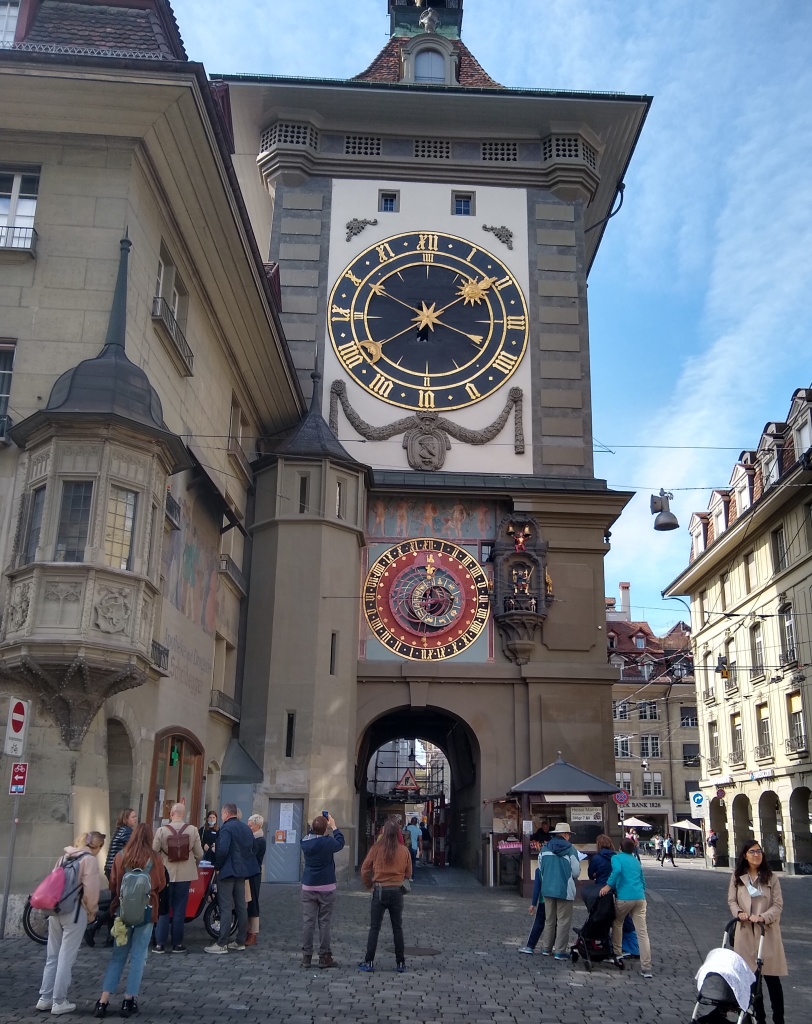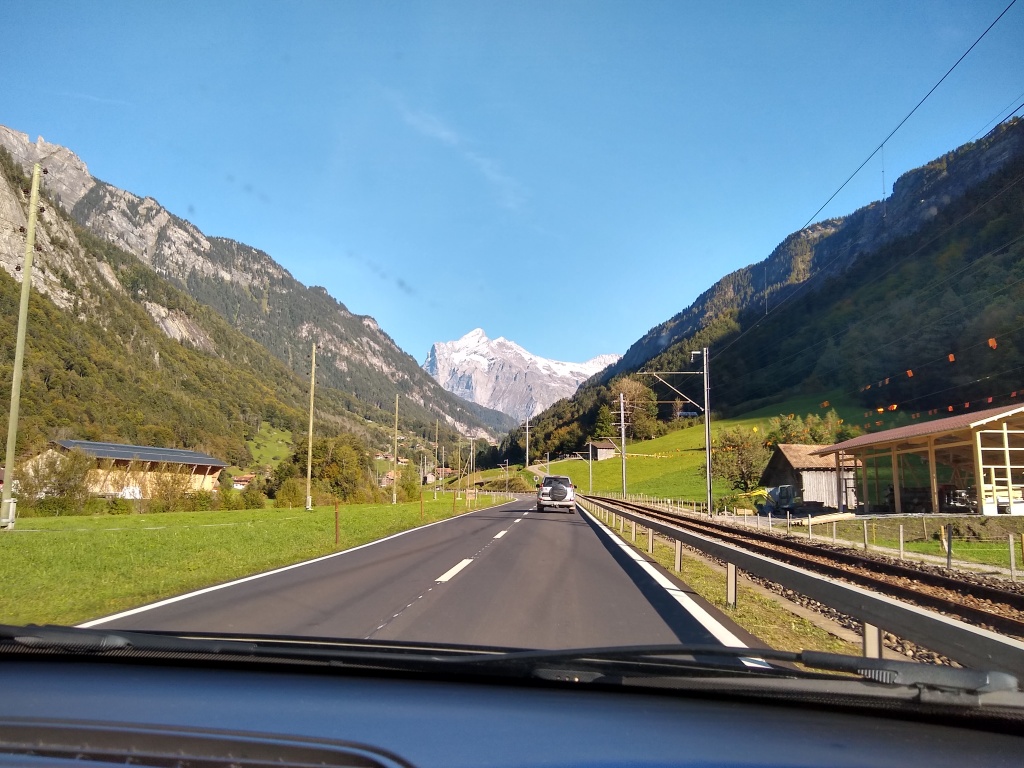Bern was where Albert Einstein was working as a patent clerk during his “miracle year” of 1905. In 6 months, he published 4 papers any one of which should have been worth a Nobel prize:
- Photoelectric effect (submitted March 18, published June 9)
- Brownian Motion (submitted May 11, published June 19)
- Special Relativity (submitted June 30, published September 26)
- Energy = Mass (submitted September 27, published November 21)
It’s probably the most productive year any scientist has ever had. None of the math was terribly hard, but each paper revolutionized an entire subject by looking at it differently.
September 30th: First target of the day was the Einstein Museum.

I got off to a rocky start in the museum, which restated a very wrong but perniciously widespread misconception.

This is wrong because (1) matter/mass/energy all bend space-time (not just space), and (2) time is always bent at least as much as space. Around the Earth, for slow-moving objects, gravity is more than 99.9999% due to bending of time, and less than 0.0001% due to bending of space. For extremely fast-moving objects it get closer to 50-50. So simplifying to “matter bends time” is OK and sometimes approximately correct, but simplifying to “matter bends space” is always wrong. Yet everyone does it. Jim Al-Khalili. Stephen Hawking.
Other than that, the physics was pretty good. However, a significant chunk of the exhibit was devoted to the rise of the Nazis and the development and use of nuclear weapons. I wasn’t expecting it to be so depressing.

Some random buildings in Bern:


We had lunch at the Äss Bar, a discount restaurant that gets 1-day-old bread from nearby bakeries and makes cheap sandwiches from it.

A famous clock tower was right on our way, so we waited for it to strike, but it was underwhelming. A few figures to the right of the red dial moved.

Farther down the same street was our second goal for the day: Kramgasse No. 49, the “Einsteinhaus”, the apartment where Einstein lived in 1903-5.


Then we walked around town a bit.


Finally we had to head out for our drive to the Swiss Alps. They became obvious long before we reached them.
